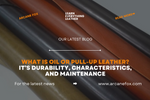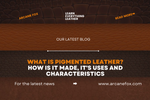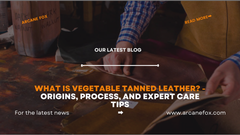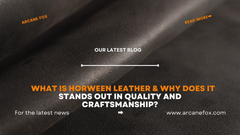What is Patent Leather? & How to Maintain It’s Quality and Shining
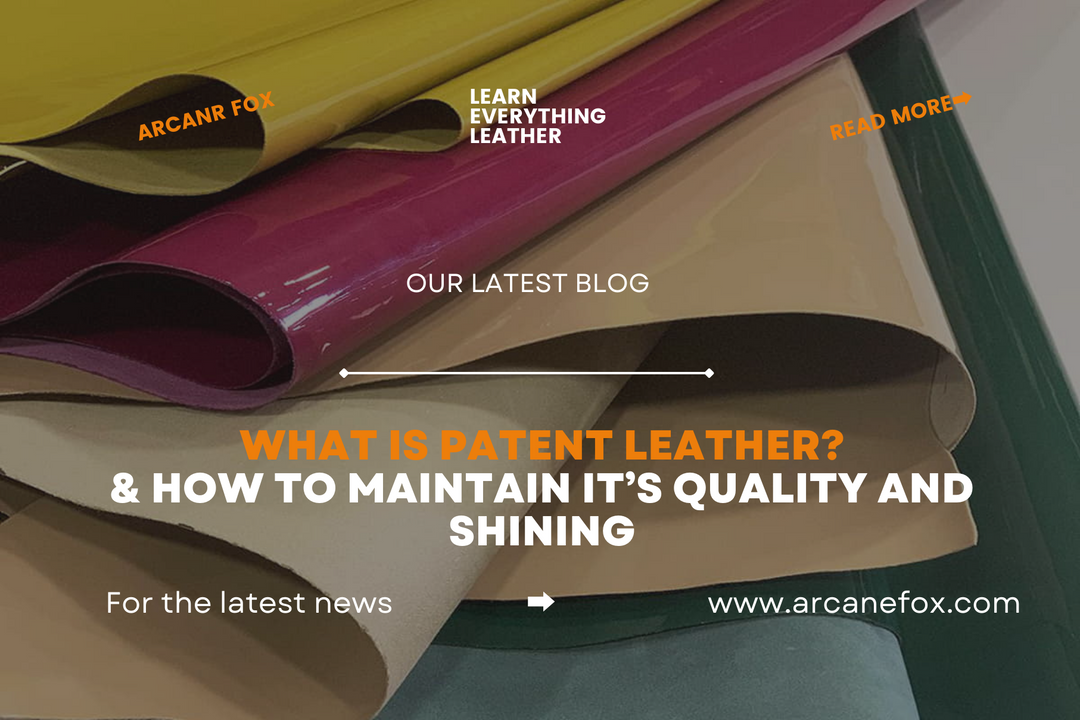
What is Patent Leather? & How to Maintain It’s Quality and Shining
Patent leather is frequently the first material that comes to mind when considering leather types that are weather resistant and have a high sheen. It gives a wide range of leather goods a sophisticated touch.
When layers of oils were put to color leather and allowed to dry, patent leather was created in the late 1700s. The finished surface was strong and water-repellent. Since then, synthetic materials have taken the place of oils, and high-gloss leather is now frequently used in shoes, wallets, bags, and accessories.
Key Takeaways From This Blog
This blog is your comprehensive guide for learning about patent leather, including its history, manufacture, and features. Learn how to spot real patent leather and tell it apart from imitations. Find out how it may be used in a variety of fashion items, including purses and shoes. Explore the vital subject of keeping the brilliant shine of patent leather as well as washing and removing scuffs. Find out how to properly store patent leather and get the answers to your often asked concerns about this unusual material. By the time you're done, you'll be well-equipped to enjoy and maintain the quality sheen of your patent leather accessories.
1. What is Patent Leather?

A type of leather called patent leather is distinguished by having a particularly transparent, bright, polished surface. The surface is typically waterproof or water resistant, and by shielding the leather underneath, it contributes to durability.
Patent leather is frequently use in more formal and dress leather products, such as shoes, handbags, and belts, due to its sheen. The glossy surface needs to be well-maintain because it is scratch resistant. This particular type of leather was initially made from natural leather that had been taken in various oils. It is now much more typical for it to be constructed out of faux leather with artificial finishes. It's also known as "enameled leather" at times.
Faux synthetic materials' lower production expenses allow patent leather to see a boom in popularity in the 1960s. It is now available in almost any color and is used to make a wide types of patent leather products, such as boots, handbags, purses, pants, skirts, costumes, belts, watch bands, hats, backpacks, glasses cases, wallets and personal accessories.
2. History of Patent Leather
In the 1820s, patent leather—a true leather type—became popular, especially in Birmingham, England throughout Europe. It had been brought to America several years later. Because it is created from animal skins that have been tanned using a patent glaze or gloss, it has a distinctive look and feel. It is still used today for expensive accessories like belts, shoes, and purses. It often costs more than typical leather goods and is very pricey.
3. Why It’s Called Patent Leather?
One of the first people to create waterproof leather also managed to secure a patent for the manufacturing process. As a result, this unique type of leather was simply and widely referred to as "patent leather" due to the fact that it was made using a patented method.
4. How Patent Leather is Made?

Flexible leather known as "patent leather" is coated with layers of linseed oil or acrylic to make it appear lustrous and brand-new. This leather is made in a straightforward but time-consuming technique. Here is the procedure in detail.
4.1 Hide Preparation
Starting with salt curing, the preparation of hides aims to prevent putrefaction of the collagen due to bacterial multiplication during the interval between getting the hide and its processing. Osmotic pressure, employed in curing, draws water out of hides and skins.
4.2 Soaking, Liming, Bating
The first stage in a procedure called soaking is to get rid of the salts that accumulated during curing. During this process, the skins go under water that contains particular chemicals to prevent the growth of germs and fungi. After being soaked, hides and skins are lime. This entails treating the hides in a pit or drum filled with a lime-milk solution. Liming gets rid of keratin, hair, and natural grease and lipids. Additionally, it induces the proper level of fibrosis and fiber splitting in the collagen in the hide, preparing it for tanning. The skins can then be bated based on the intended use of the various sorts of leather. Enzymes are added, which softens the skins.
4.3 Tanning
Animal skins undergo treatment with a solution of salt, oil, and lime during the tanning process to produce patent leather. Due to the usage of hazardous glue in manufacturing, this method harms the environment. There are several types of leather, including calfskin, sheepskin, rabbit skin, etc., all of which harm the environment.
4.4 Finishing
Nothing compares to patent leather in terms of leather items. 'Finishing' is the procedure use to create this glossy, smooth leather. This entails polishing the leather till the surface is shiny and smooth. Additionally, it imparts the leather flexible texture and color, making it ideal for precision-required products like watches and shoes. Despite the fact that purchasing this type of leather can be pricey, be sure you are using it legally!
5. What Patent Leather is Used For?
You need look no farther than patent leather if you want to add something distinctive and fashionable to your wardrobe. Its distinctive texture is ideal for fashion-conscious people, and it is frequently use for clothes, household necessities, and home décor products. Additionally, this leather is tough and simple to maintain, making it a wonderful option for people who lead busy lives. So why are you still waiting? Shop now to experience the incredible versatility of this material for yourself!
5.1 Patent Leather Shoes

One of the most popular goods that consumers purchase are patent shoes. They are made of several base materials and have a wide range of sizes and shapes. Leather, rubber, plastic, and other materials are use to make shoes. Shoes can be plain or ornate, and occasionally they have characteristics that set them apart (like glossy leather). Shoes made of patent leather are incredibly robust and scratch-resistant.
5.2 Patent Leather Clothing
One of the many things that can help someone look and feel their best is clothing. This types of leather is a type of fabric created from numerous layers of leather knit together, which produces an outstanding look and feel similar to real suede. It can be use for formal clothing and shoes. It takes time and requires specialized knowledge to create patent leather, making it an expensive procedure for producers. However, because of developments in technology, this type of cloth is now more affordable than ever.
5.3 Patent Leather Wallets

Any person who would like in fashion should have a wallet in their outfit. Finding the ideal one for you is simple due to the wide range of types, colors, and marks available. Patent leather is one particularly popular type of glossy leather. This leather is attractive and long-lasting, making it ideal for footwear and other accessories. Be ready to spend more on your wallet or shoes because it takes a long time to make!
5.4 Patent Leather Handbags
A beautiful leather that is frequently use for handbags and other necessities is patent leather. It is ideal for adding a sophisticated touch to any ensemble thanks to its soft, smooth, and glossy surface. This leather comes in both synthetic and animal types. Your bag will look brand new for a longer period of time thanks to the leather treatment procedure that makes it resistant to water, grease, dirt, and other things.
6. How to Identify Genuine Patent Leather?
Using synthetic ingredients, genuine leather has been specifically treated and polished to give it a glossy, shining finish. Several layers of lacquer are typically apply during the treatment procedure to give the leather its distinct appearance. Because it is more durable than conventional cowhide-coated leather, this leather is generally regard as being of superior quality. This leather often has a smoother surface and a darker color. It is simple to recognize thanks to its characteristic fragrance and feel.
7. Advantages of patent leather
- Versatility
- Low maintenance
- Waterproof
- Signature, glossy appearance
- Dirt resistance
- Price point
A variety of appealing qualities define patent leather. Patent leather is highly flexible due to the presence of acrylic in the coating that is put to it, making it less prone to cracking and peeling than natural leathers. Additionally, due to patent leather's thinness and flexibility, producers can use it to create a wide range of products, from belts to boots.
Therefore, is patent leather sturdy? The answer is disput, but the fact that it is waterproof and dirt-resistant suggests that it is at least somewhat sturdy. It is important to note that the lacquer—which acts as a protective coating and keeps moisture and dirt from reaching the leather fibers—is the sole source of these features. With a moist cloth and mild soap, dirt can be readily wipe from the surface of patent leather. Contrary to natural leather, no conditioning is necessary because it would not even allow a conditioner to penetrate the surface.
This brings up the advantageous pricing point. As was already said, the majority of items once made of patent leather are now manufactured of more affordable synthetic leathers. Only high-end patent leather products are probably construct with a base layer of genuine, full-grain leather.
8. Disadvantages of patent leather
- Discoloration and darkening
- Prone to scuffs and scratches
- Chemical our
- No patina
- Can become sticky
- Creases and cracks are irreversible
Due to the outside coating's complex plastic composition, patent leather tends to deteriorate with time and is very difficult to restore. Discoloration is a frequent occurrence. Color migration is likely to happen, for instance, if a light-colored patent leather purse is left next to a darker item for an extended period of time (see the illustration below). If you're a sun worshiper, it's important to keep in mind that discoloration can also occur if the material is constantly expose to UV radiation.
Another drawback is that this shiny leather is particularly prone to scuffs and scratches, while small problems can be fix by using treatments. Although they are less prone to develop, cracks and creases are frequently permanent once they do. Given the shiny appearance, you might also be asking if patent leather is tacky. It's interesting that it can quickly become sticky as a result of the breakdown of surface-layer polymers.
Since the surface of patent leather is impermeable, it will never develop a patina, which may discourage some leather fans from embracing it. Finally, whereas polished leather often has a less attractive, artificial odor, natural leather benefits from a rich, earthy scent. You guessed it, the plastic-based covering is likewise the key factor here.
9. Natural Patent Leather vs Faux Patent Leather

When the first types of patent leather were created in the late 1700s, natural leather was the type of material used. This is important to note when comparing patent leather with leather. To give it the appearance of patent leather and make it water resistant, it would be color or dye and finished with a protective layer.
When faux leather became readily available (and reasonably priced) in the 1900s, it quickly gained popularity as a base material for patent leather. The premium grains of natural leather were also mask because patent leather has a thick protective coating over it. Thus, covering synthetic leather produced a strikingly similar—and significantly less expensive—result.
Because of this, the majority of patent leather made nowadays is imitation leather. Additionally, most of the glossy finishes on patent leather are artificial. It has become a frequently used material because of the use of inexpensive faux leather and inexpensive finishes. It is utilize throughout a wide range of faux leather product types and quality levels.
10. Patent Leather Care & Maintenance

10.1 How to Clean Patent Leather?
Your favorite pair of patent leather Derby shoes are beginning to look a little worse for wear as it is the morning after the previous night. Thankfully, all patent leather products have a layer of protecting lacquer that makes cleaning them reasonably simple. In reality, a variety of everyday things, like liquid soap, cooking oils, and petroleum jelly, can be employ as cleaning agents. Unlike with animal leather, there is no need to repair cracked fibers with a moisturizing conditioner.
Start by carefully brushing off any dirt or debris with a soft brush (never a hard-bristled one as this could cause scratches), giving special attention to any cracks and crevices. In a bowl, combine a small amount of lukewarm water with mild liquid soap. To check for lint or color transfer, lightly moisten a microfiber cloth and spot test it on a hidden surface. If it passes the test, gently clean the remaining area and wait 24 hours before using the product again.
If you don't have access to the mentioned before, you can also effectively clean patent leather with mild baby wipes and pre-moistened wet wipes. After application, wipe off any surface moisture with a dry cloth or even a piece of tissue to prevent stains and shine reduction. To be sure the wipes don't contain any toxic compounds, don't forget to read the ingredients.
We advise using a microfiber cloth to apply a patent leather cleaning for particularly stubborn spots.
10.2 How to remove scuffs from patent leather?
When patent leather items are worn regularly, scuffs come naturally, but they are typically simple to remove with a polish. Consider applying a little amount of petroleum jelly to a microfiber cloth and gently massaging the affected area(s) with the cloth in a circular motion. Give the petroleum jelly 20 to 30 minutes to soak into the surface. After that, just wipe it away with a dry towel to leave the surface free of scratches. Apply olive oil in its place for serious abrasions.
10.3 How to shine patent leather?
The distinctive glossy, luxurious shine of patent leather is probably its best feature. To restore it, we recommend investing in a patent leather cleaner. Use a microfiber cloth to apply a generous amount to your product, then rub it in circular motions. The surface will get slightly foggy when it has dried for about 5 minutes. Buff the entire surface with a dry portion of the towel after that.
10.4 How to store patent leather?
Products made of patent leather may turn discolored after long exposure to UV radiation, such as that from sunlight. It is crucial to keep these products out of natural light when storing them. Nevertheless, some patent leathers are now coated with substances that support UV resistance, so it's always worthwhile to double-check this.
It's interesting to note that lighter hues of patent leather, like cream and white, can also take on the hues of other things. As a result, the garment bag that they come with is always the best place to store them. If not, keep them in a protected area like a shoe tree, cabinet, or drawer.
11. Conclusion
Seth Boyden made patent leather popular. It is an animal skin that has had its surface tanned to give it a smooth, recognizable glossy appearance. Calfskin is normally the animal skin that is refer to when the word "patent leather" is use, however other types of animal skins can also qualify. Due to its high level of design and durability, patent leather is frequently use in shoes and accessories. In order to help you decide whether patent leather is the best type of leather for your purposes, we've covered everything that you need to know about it in this blog. Gratitude for reading!
Learn more about leather here Leather 101 - The Ultimate Guide to Different Types of Leather
Related Topics
What is Aniline Leather? Types of Aniline, Characteristics, And More
What is Semi-Aniline Leather? History, Characteristics, And More
What is Burnished Leather? & Why Should It’s Be Your Top Choice
What is Antique Leather? & Why it is So Popular
What is Bicast Leather? Myths, Facts, and Benefits
What is Embossed Leather? & How to Use This Process
What is Embroidery Leather? & What to Look for In Leather Embroidery?
What is Faux Leather? It’s Quality & Durability Against Other Leather!
What is Nappa Leather? Quality, Characteristics, and Maintenance
What is Nubuck Leather? & How is it Different From Suede Leather

